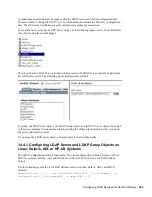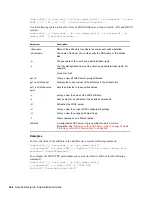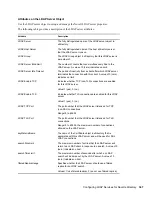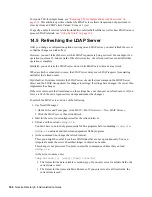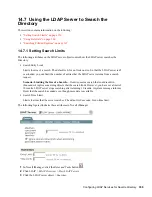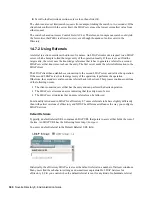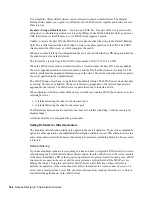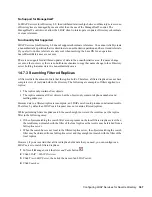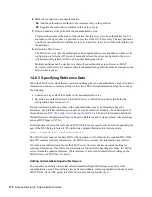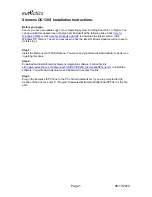
Configuring LDAP Services for Novell eDirectory
357
no
vd
ocx
(e
n)
6 Ap
ril 20
07
SASL is designed to allow new protocols to reuse the existing mechanisms without requiring
redesign of the mechanisms, and it also allows existing protocols to make use of new mechanisms
without the redesign of protocols. To use SASL, each protocol provides a method for identifying
which mechanism is to be used, a method for exchange of mechanism-specific server-challenges
and client-responses, and a method for communicating the outcome of the authentication exchange.
SASL mechanisms are named by strings, consisting of uppercase letters, digits, hyphens, and
underscores. SASL mechanism names must be registered with the Internet Assigned Numbers
Authority (IANA).
If a server supports the requested mechanism, it initiates an authentication protocol exchange. This
consists of a series of server challenges and client responses that are specific to the requested
mechanism. During the authentication protocol exchange, the mechanism performs authentication,
transmits an authorization identity from the client to server, and negotiates the use of a mechanism-
specific security layer. If the use of a security layer is agreed upon, then the mechanism must also
define or negotiate the maximum cipher-text buffer size that each side is able to receive.
The LDAP server supports the following mechanisms:
DIGEST-MD5
EXTERNAL
NMAS_LOGIN
GSSAPI
These mechanisms are installed on the server during an eDirectory installation or upgrade. However,
on Linux and UNIX, the nmasinst utility must be used to install the NMAS methods.
As specified above, the LDAP server queries SASL for the installed mechanisms when it gets its
configuration, and automatically supports whatever is installed. The LDAP server also reports the
current supported SASL mechanisms in its rootDSE by using the supportedSASLMechanisms
attribute. Because these are the registered mechanisms, the correct naming conventions must be
used to make use of them.
The LDAP bind protocol allows the client to use various SASL mechanisms for authentication.
When the application uses the LDAP bind API, it must choose either the simple bind and supply a
DN and password, or choose the SASL bind and supply the SASL mechanism name and the
associated SASL credentials required by the mechanism.
DIGEST-MD5
LDAP supports the DIGEST-MD5 mechanism through the bind request. Instead of requesting an
LDAP simple bind (DN and clear-text password), you request an LDAP SASL bind by providing
the DN and the MD5 credentianls. The DIGEST-MD5 mechanism does not require TLS. The LDAP
server supports DIGEST-MD5 over clear and secure connections.
MD5 provides an encrypted hash of passwords. Passwords are encrypted even on clear connections.
Therefore, the LDAP server accepts passwords that use MD5 on either the clear-text or encrypted
port. If someone tries to sniff this connection, the password cannot be detected. However, the entire
connection can be spoofed or hijacked.
This mechanism is an LDAP SASL bind (not a simple bind). Therefore, the LDAP server accepts
these requests, even if you selected the
Require TLS for Simple Binds with Passwords
check box
during installation.
Summary of Contents for EDIRECTORY 8.8 SP2
Page 4: ...novdocx en 6 April 2007...
Page 116: ...116 Novell eDirectory 8 8 Administration Guide novdocx en 6 April 2007...
Page 128: ...128 Novell eDirectory 8 8 Administration Guide novdocx en 6 April 2007...
Page 255: ...256 Novell eDirectory 8 8 Administration Guide novdocx en 6 April 2007...
Page 406: ...408 Novell eDirectory 8 8 Administration Guide novdocx en 6 April 2007...
Page 563: ...566 Novell eDirectory 8 8 Administration Guide novdocx en 6 April 2007...
Page 573: ...576 Novell eDirectory 8 8 Administration Guide novdocx en 6 April 2007...
Page 601: ...604 Novell eDirectory 8 8 Administration Guide novdocx en 6 April 2007...



